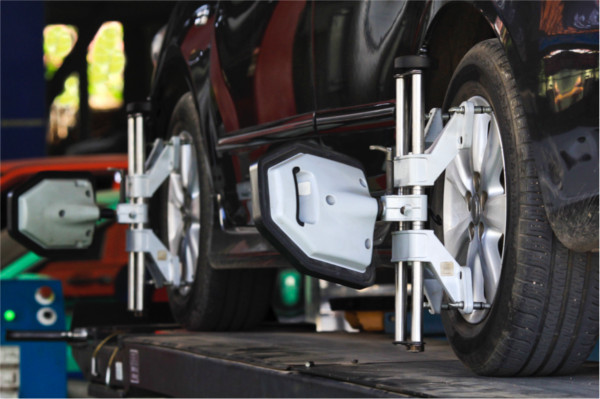
Your car may give you clues to signal when you need a wheel alignment, or the adjustment of the angles of your car’s wheels to match car manufacturer specifications. By paying attention to how your vehicle drives and the way it feels, you can take care of this standard maintenance right away. Ignoring these hints could result in excessive wear and tear of your tires or your car’s suspension, which is the system that enables steering and determines the amount of friction between tires and road. Poor wheel alignment causes suspension issues, and vice versa. Maintaining wheel alignment will help enhance your safety and save money.
Reasons for Adjustments
Everyday driving may harm your suspension over time. In San Diego, you may not contend with snow and ice, but suspension problems can still occur in many ways. A minor accident could be the cause of a problem for your wheel alignment. Bumping a curb, even at slow speeds, can also cause suspension issues. As the rubber in your tire ages and undergoes normal wear and tear, it starts to crack and loosen over time and throw off the alignment.
Assessing Your Vehicle
While driving, take note of how the steering wheel feels in your hands as you maneuver the car to determine if you need a wheel alignment. If your vehicle drifts to one side repeatedly, this can be an indication of worn suspension parts. Another sign could be excessive vibrations in your steering wheel.
Check the tread of your tires to note the wear. If you see uneven wear, usually existing on the outside of some of your tires, this can indicate a problem with wheel alignment. For information on how to do this, refer to our blog post on checking tires for wear and tear.
What You Can Do
If you find that you do have some problems with your tires or suspension, you might be able to resolve the problem yourself without paying for the service.
Check the pressure of all four tires. To check the pressure, you will need a gauge and your owner’s manual. With cold tires, first consult the manual to learn the recommended pressure. Then, fit the gauge onto the stem of each tire and note the reading. If you find them to be underinflated, inflate them to the recommended level using compressed air, typically available at service stations. Be careful not to add too much air because overinflated tires can experience increased wear.
Car parts and maintenance can be expensive. For this reason, it will benefit you to keep ahead of these expenses by taking care of problems before they grow. You may hear terms such as:
– Feathering: When tire treads wear more smoothly on one side and remains sharper on the other side.
– Camber wear: When the inside or outside rib or groove of the tread has more wear than other ribs.
– Heel/toe wear: Pattern that occurs circumferentially with one side of the tread blocks wearing more quickly than the other side.
Contact us today to ask specific questions about the recommended work so you can keep track of your vehicle’s maintenance.
